Abstract
A-56619 and A-56620 are two new aryl-fluoroquinolones which are as potent as or more potent than norfloxacin when administered orally and subcutaneously in mouse protection tests against Staphylococcus aureus, Streptococcus pyogenes, and Streptococcus pneumoniae. A-56619 and A-56620 were more potent than norfloxacin when administered orally against Escherichia coli, Proteus mirabilis, Serratia marcescens, and Pseudomonas aeruginosa. A-56620 was as potent or two- to threefold more potent than norfloxacin when administered subcutaneously against members of the family Enterobacteriaceae and Pseudomonas aeruginosa. Infection with Salmonella typhimurium was more effectively treated with A-56619 (50% effective dose [ED50], 1.4 mg/kg per day) than with norfloxacin (ED50, 62.8 mg/kg per day). E. coli or Pseudomonas pyelonephritis in mice was more effectively treated with A-56619 or A-56620 than with norfloxacin. After oral treatment, the ED50s of A-56619 and A-56620 were less than 12.5 mg/kg per day against E. coli and 62.9 and 38 mg/kg per day against P. aeruginosa pyelonephritis, respectively. Norfloxacin was ineffective at 200 mg/kg per day against E. coli or P. aeruginosa pyelonephritis. A-56619 and A-56620 were also more potent than norfloxacin in treatment of mixed bacterial pyelonephritis caused by E. coli and Streptococcus faecalis. A-56619 was at least 30 times more potent than norfloxacin and A-56620 was 4 to 11 times more potent than norfloxacin when administered against Klebsiella pneumonia in mice. A-56619 and A-56620 were at least 2 to 10 times more potent than norfloxacin against Staphylococcus aureus infections in immunosuppressed mice. A-56619 was equally potent in all in vivo tests when administered orally or subcutaneously, whereas A-56620 was similar to norfloxacin in being more potent when administered subcutaneously. The peak serum levels after subcutaneous and oral administration of A-56619 and A-56620 were higher than that of norfloxacin. The serum hal-lives of A-56619 and A-56620 after subcutaneous and oral administration were longer than the serum half-life of norfloxacin.
Full text
PDF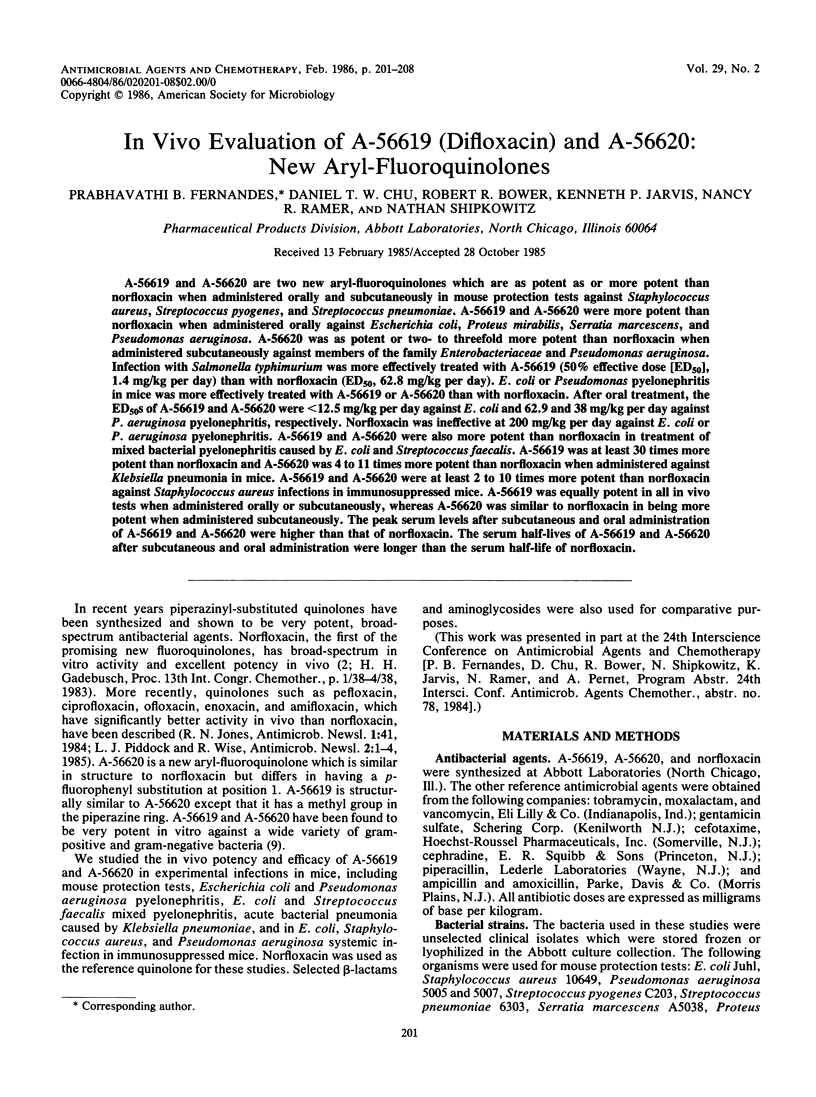
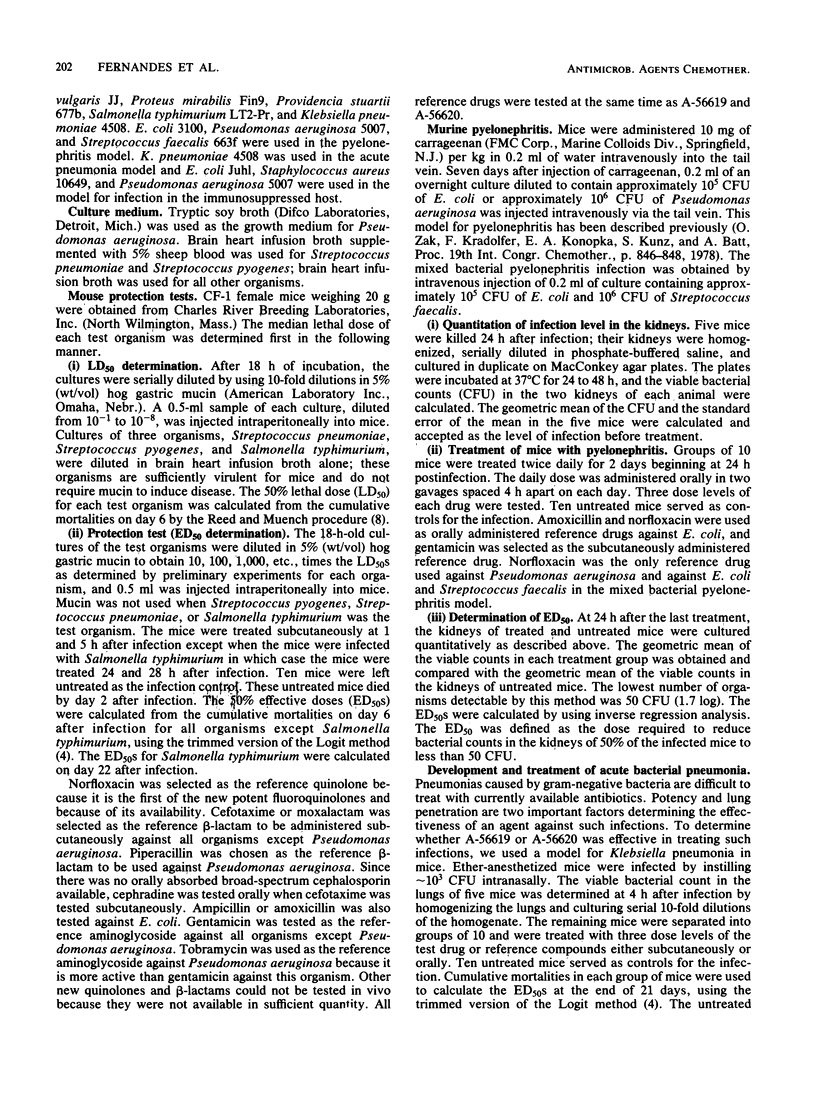
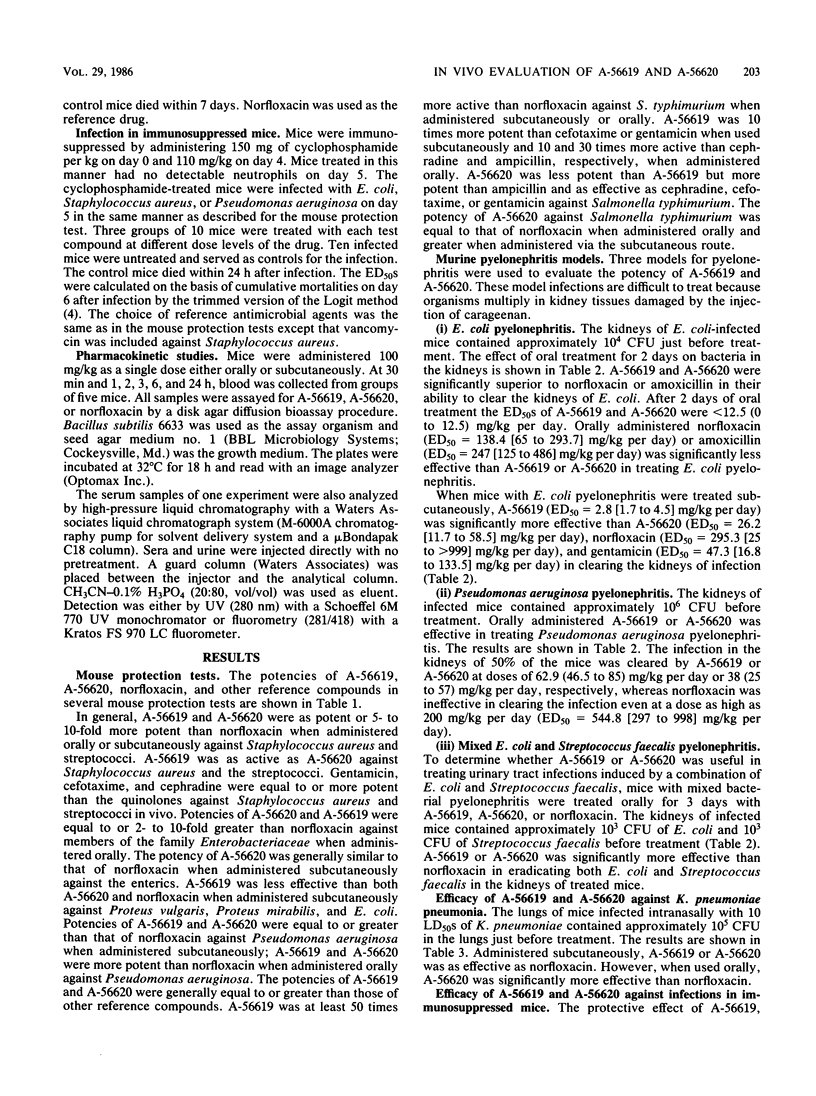
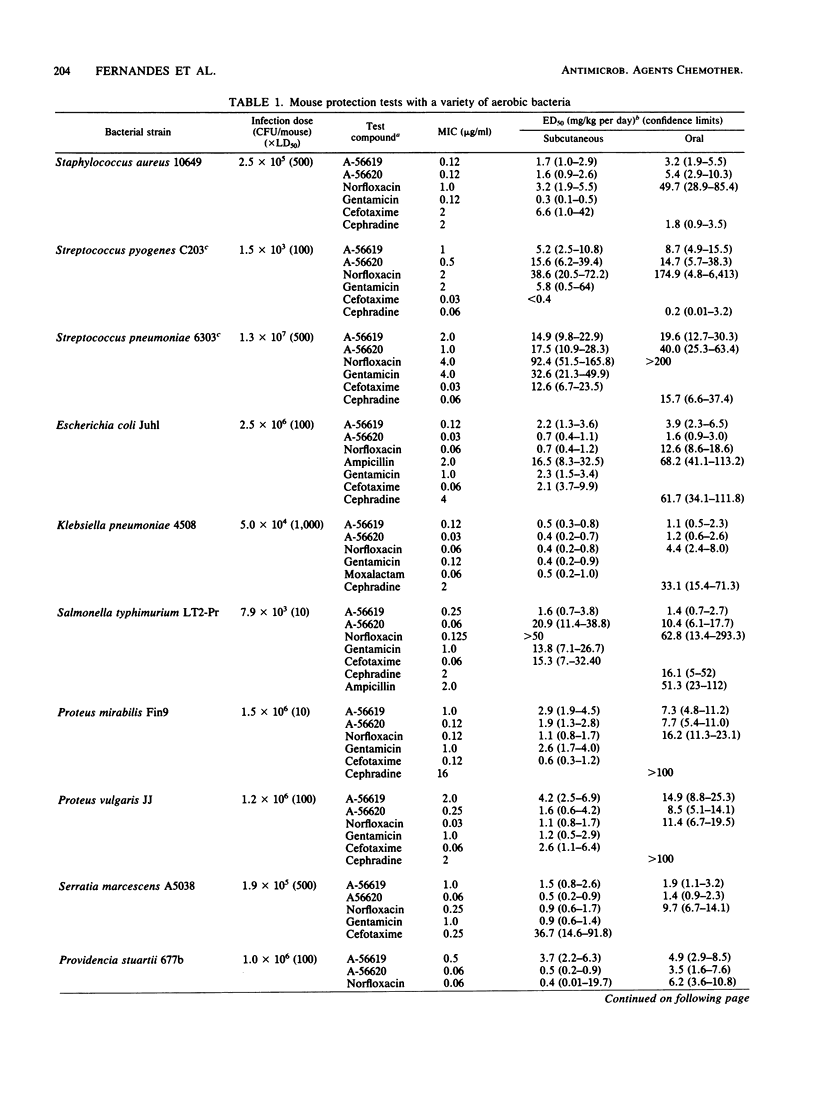
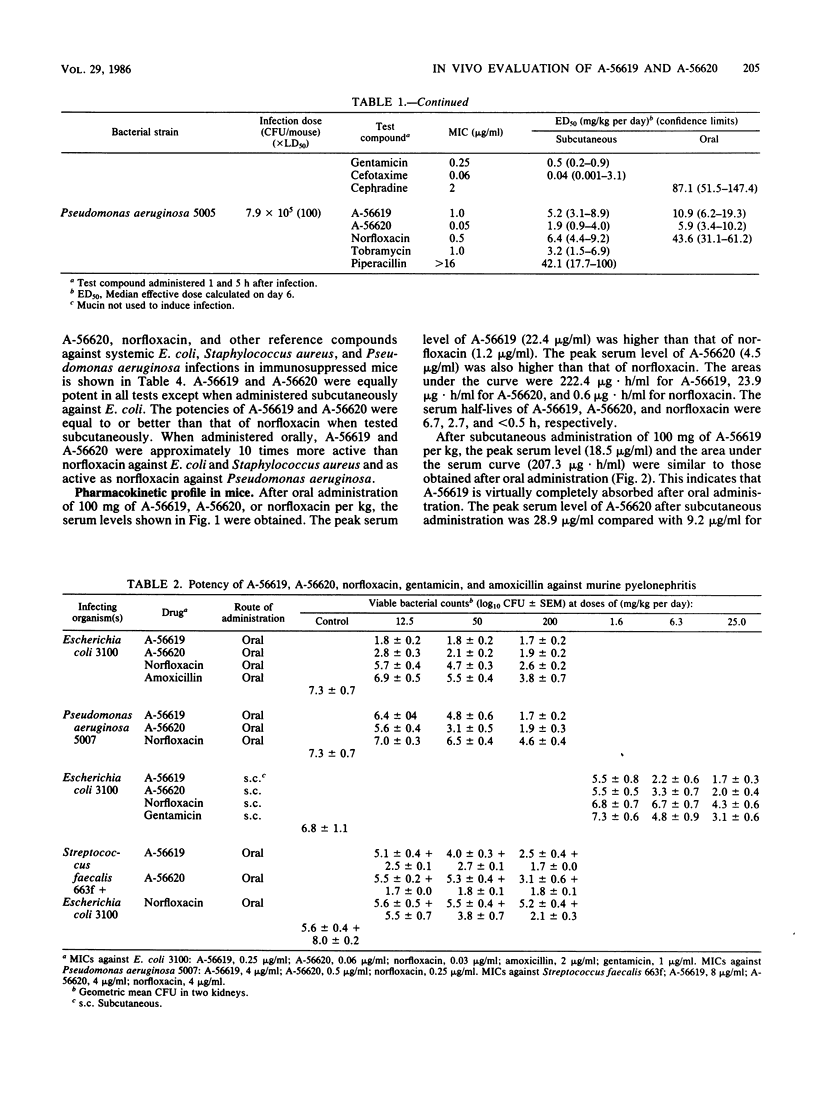
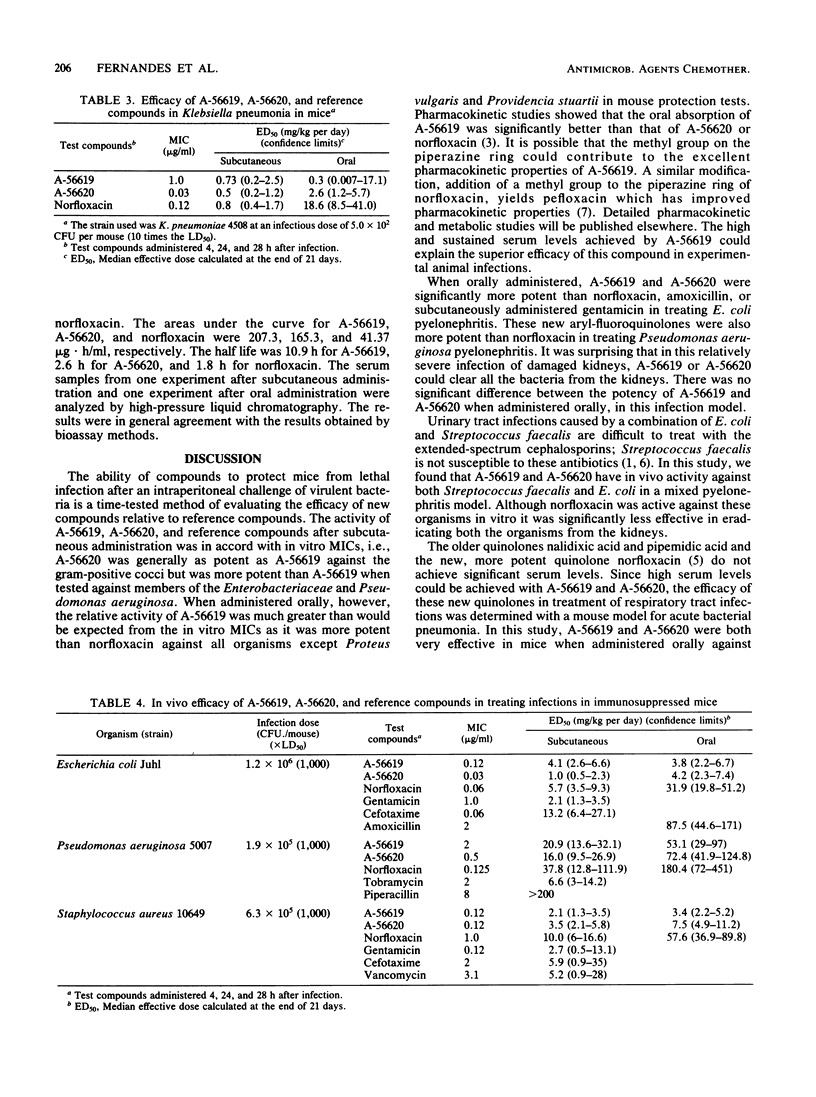
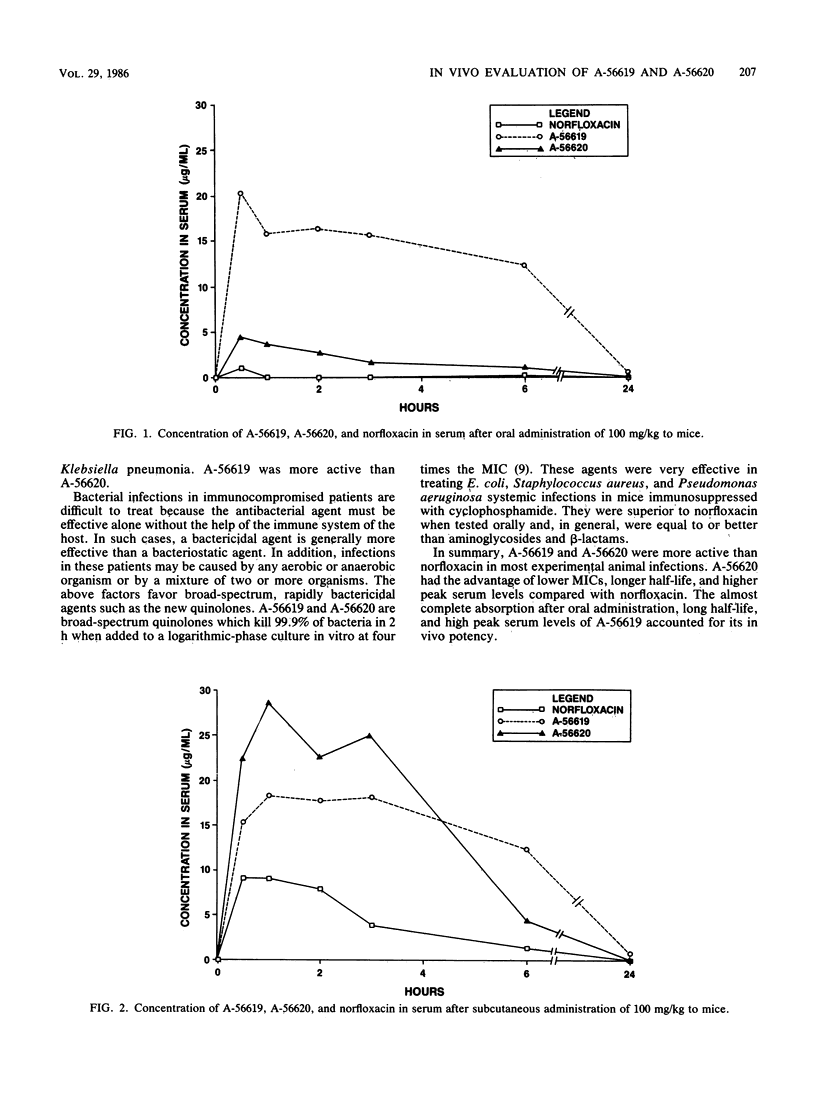
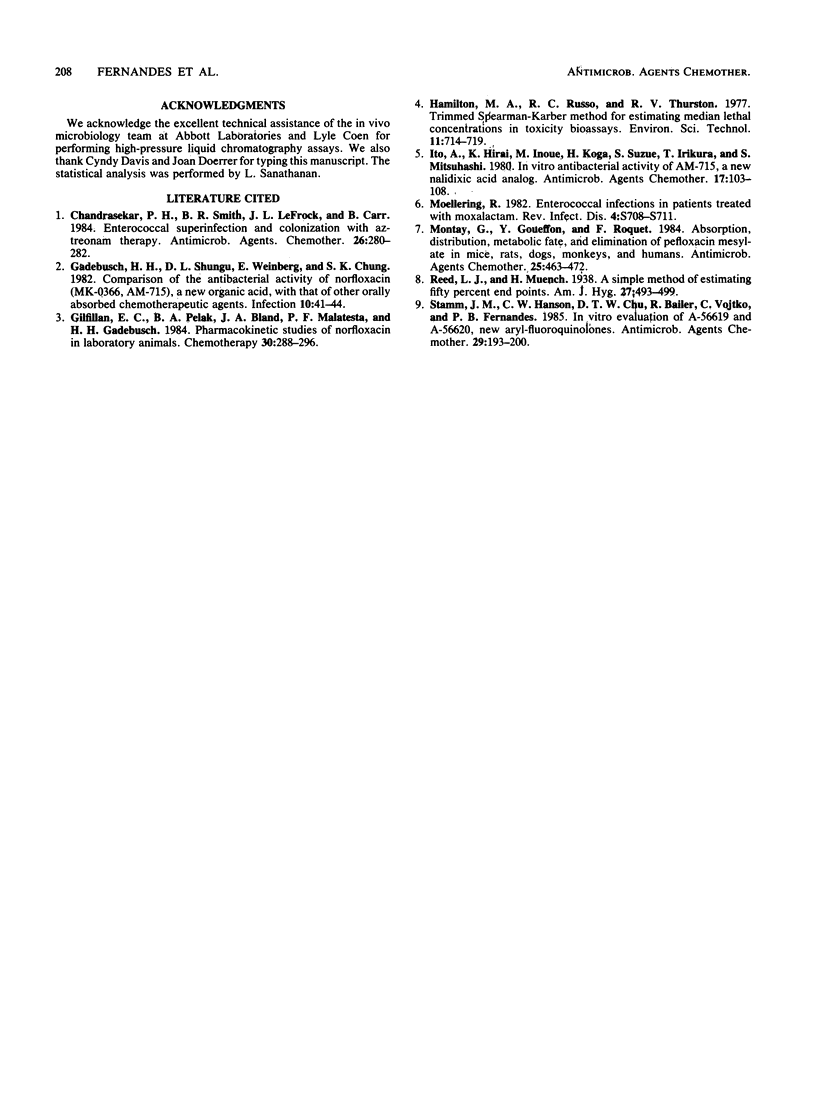
Selected References
These references are in PubMed. This may not be the complete list of references from this article.
- Chandrasekar P. H., Smith B. R., LeFrock J. L., Carr B. Enterococcal superinfection and colonization with aztreonam therapy. Antimicrob Agents Chemother. 1984 Aug;26(2):280–282. doi: 10.1128/aac.26.2.280. [DOI] [PMC free article] [PubMed] [Google Scholar]
- Gadebusch H. H., Shungu D. L., Weinberg E., Chung S. K. Comparison of the antibacterial activity of norfloxacin (MK 0366, AM 715), a new organic acid, with that of other orally absorbed chemotherapeutic agents. Infection. 1982 Jan;10(1):41–44. doi: 10.1007/BF01640837. [DOI] [PubMed] [Google Scholar]
- Gilfillan E. C., Pelak B. A., Bland J. A., Malatesta P. F., Gadebusch H. H. Pharmacokinetic studies of norfloxacin in laboratory animals. Chemotherapy. 1984;30(5):288–296. doi: 10.1159/000238283. [DOI] [PubMed] [Google Scholar]
- Ito A., Hirai K., Inoue M., Koga H., Suzue S., Irikura T., Mitsuhashi S. In vitro antibacterial activity of AM-715, a new nalidixic acid analog. Antimicrob Agents Chemother. 1980 Feb;17(2):103–108. doi: 10.1128/aac.17.2.103. [DOI] [PMC free article] [PubMed] [Google Scholar]
- Moellering R. C., Jr Enterococcal infections in patients treated with moxalactam. Rev Infect Dis. 1982 Nov-Dec;4 (Suppl):S708–S711. doi: 10.1093/clinids/4.supplement_3.s708. [DOI] [PubMed] [Google Scholar]
- Montay G., Goueffon Y., Roquet F. Absorption, distribution, metabolic fate, and elimination of pefloxacin mesylate in mice, rats, dogs, monkeys, and humans. Antimicrob Agents Chemother. 1984 Apr;25(4):463–472. doi: 10.1128/aac.25.4.463. [DOI] [PMC free article] [PubMed] [Google Scholar]
- Stamm J. M., Hanson C. W., Chu D. T., Bailer R., Vojtko C., Fernandes P. B. In vitro evaluation of A-56619 (difloxacin) and A-56620: new aryl-fluoroquinolones. Antimicrob Agents Chemother. 1986 Feb;29(2):193–200. doi: 10.1128/aac.29.2.193. [DOI] [PMC free article] [PubMed] [Google Scholar]


